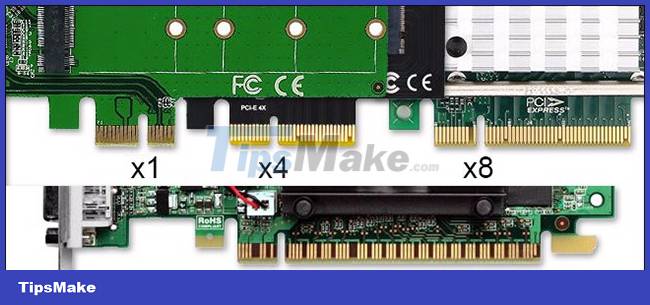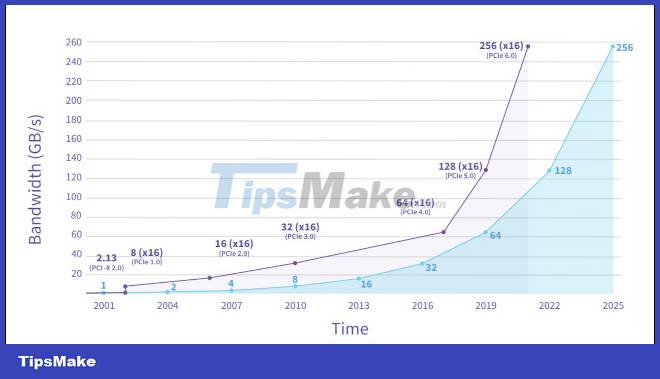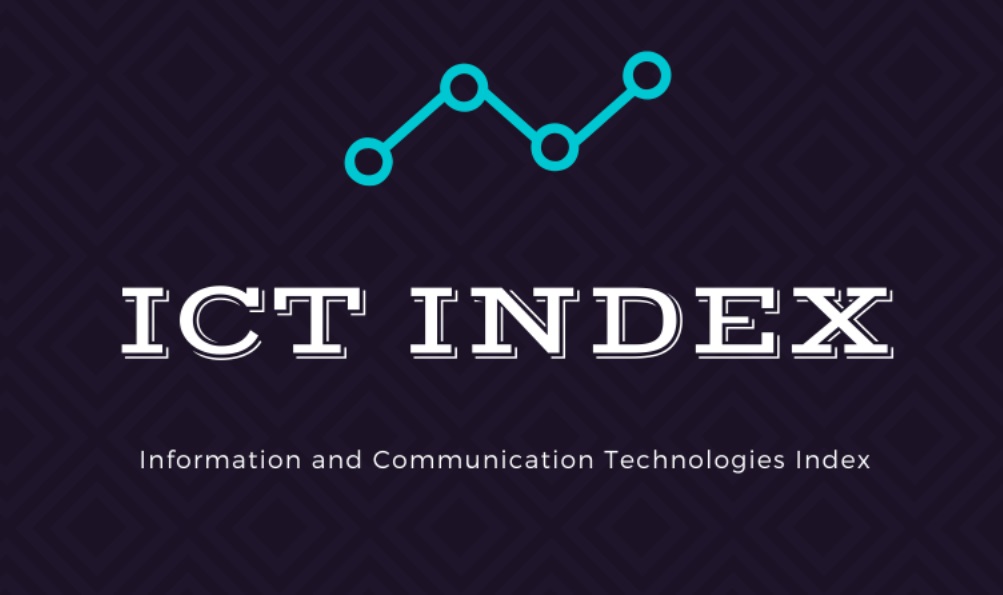PCI Express (PCIe 6.0): What's New and When Will It Be Available?
The computer industry is just beginning to get acquainted with the popularity of PCIe 4.0 in consumer products, and PCIe 5.0 has just been officially released not long ago. However, right now, PCIe 6.0 is in development and will be announced soon as well. So what's so special about this 'future' connection standard?
What is PCIe?
PCIe stands for Peripheral Component Interconnect Express. This is basically a common motherboard connection standard. PCIe allows different components of the system hardware to 'communicate' with the motherboard and other parts of the system. These can be mentioned as sound cards, graphics cards or network cards connected to the PC. In addition, PCIe is also used for small, high-speed NVMe M.2 SSDs.

If you've ever built your own PC or learned about modern motherboard models in the last few years, you're no stranger to PCIe slots. PCIe connectors come in basically 4 main styles: x16, x8, x4 and x1. They can be distinguished quite easily because x16 slots are usually quite large in size, then get smaller. However, that's not always the case, as sometimes a PCIe slot is as big as x16 but really only supports x8.
The 'x' unit indicates the number of data lanes connected to a given location on the motherboard. The higher the number of lanes, the greater the potential bandwidth that that PCIe slot supports, or in other words, the faster the data connection. Most modern expansion cards work best in the x16 slot, especially for graphics cards.
PCIe also supports an extremely useful capability of backwards compatibility between versions. For example, a card designed with PCIe 2.0 will still be able to work properly in a PCIe 6.0 slot, provided, of course, that there are appropriate software drivers to operate the device.
What's New in PCIe 6.0?
In early January 2022, the PCI Special Interest Group (PCI-SIG) announced the final specifications for PCIe 6.0. The new standard promises faster data transfer speeds and more efficient backward compatibility.
PCI-SIG's plan is to roll out new PCIe standards every two or three years, with the goal of effectively doubling the transmission bandwidth of previous versions. PCIe 6.0 is certainly no exception.
In theory, a single PCIe 6.0 x16 slot is capable of providing a maximum bidirectional bandwidth of 256 gigabytes per second (GB/s), compared to 128GB/s for PCIe 5.0. To make it easier to imagine, imagine you own a graphics card connected via a PCIe 6.0 port. That bidirectional bandwidth number indicates the total amount of data the card can send to the CPU and the CPU sends back to the card. In the case of PCIe 6.0, this means 128GB/s each way for a total of 256GB/s.

Compare that to PCIe 3.0, a standard that has been popular for many years and is still mostly used on PCs purchased before 2019. PCIe 3.0 offers a cumulative maximum bandwidth of 32GB/s on a single x16 slot. . Thus, PCIe 6.0 supports eight times more bandwidth than the still widely used version of PCIe 3.0. That's a 'crazy' upgrade. But in reality, current games will hardly be able to saturate that much bandwidth. The most notable improvement we can see with PCIe 6.0 is the effectively improved NVMe SSD speeds, just like when switching to PCIe 4.0 – SSDs typically use 4 PCIe lanes. But exact improvement numbers can only be given after in-depth real-world tests.
When is PCIe 6.0 available?
According to PCI-SIG's estimates, devices that support PCIe 6.0 will only be released to the market at the earliest, about 12 to 18 months after the standard is officially announced. PCIe 6.0 was introduced on January 11, 2022, so PCIe 6.0 products should be out early 2023 at the earliest, which is a situation where everything goes smoothly.
The bandwidth improvements that PCIe 6.0 offers are urgently needed in areas related to machine learning and artificial intelligence, such as in the automotive, aerospace or data center industries. material, etc.
For the consumer market, it will take longer because CPU manufacturers have to carefully calculate when to release devices that support PCIe 6.0. Currently, the industry as a whole has just entered the era of PCIe 4.0 for home PCs. AMD released its first consumer PCIe 4.0-enabled CPU in mid-2019, while Intel was in early 2021. In terms of graphics cards, AMD released its first PCIe 4.0 GPU also in 2019, while NVIDIA is 2020.
However, the transition to PCIe 6.0 may mean that the upgrade costs are not too high. PCIe 6.0 graphics cards are unlikely to require larger x16 connections, which can result in reduced hardware upgrade costs, while maintaining the graphics card's maximum bandwidth.
Given the advantages outlined above, expect a quick transition to PCIe 6.0, assuming technical hurdles don't cause serious delays.
You should read it
- What is the difference between PCIe 3.0, PCIe 4.0 and PCIe 5.0?
- What is PCIe 4.0? Should I upgrade?
- NVMe 2.0 protocol supports both PCIe-connected HDDs
- Should I choose SATA or PCIe SSD?
- Crucial launches the fastest PCIe 5.0 SSD model ever created, speeds up to 14.5GB/s
- PCIe 5 NVMe SSD vulnerable to thermal throttling, shutting down due to overheating
- Gigabyte reveals first PCIe Gen5 compatible power supply information
- Things you need to know about NVMe SSDs
- What's the difference between DRAM and DRAM-less SSD?
- 5 best B760 motherboards in 2024
- Intel desktop CPUs are going to take a leap forward when equipped with PCIe 4.0 and a new graphics core
- Top 5 best 2021 B550 motherboards






 What is the difference between PCIe 3.0, PCIe 4.0 and PCIe 5.0?
What is the difference between PCIe 3.0, PCIe 4.0 and PCIe 5.0? What is PCIe 4.0? Should I upgrade?
What is PCIe 4.0? Should I upgrade? 5 best cheap PCIe 4.0 motherboards
5 best cheap PCIe 4.0 motherboards Things you need to know about NVMe SSDs
Things you need to know about NVMe SSDs What would users like to change on Adobe Express Mobile?
What would users like to change on Adobe Express Mobile? NVMe 2.0 protocol supports both PCIe-connected HDDs
NVMe 2.0 protocol supports both PCIe-connected HDDs